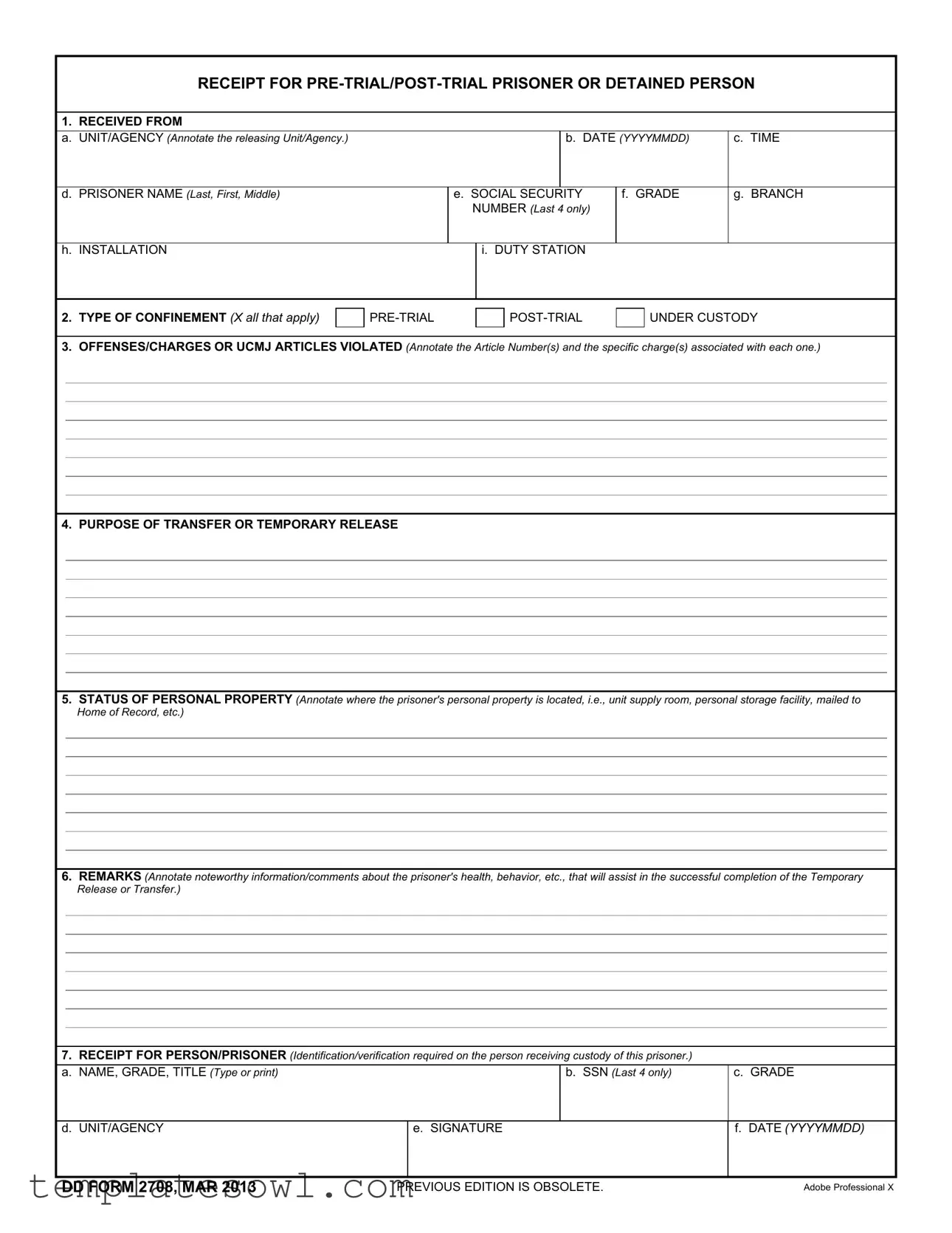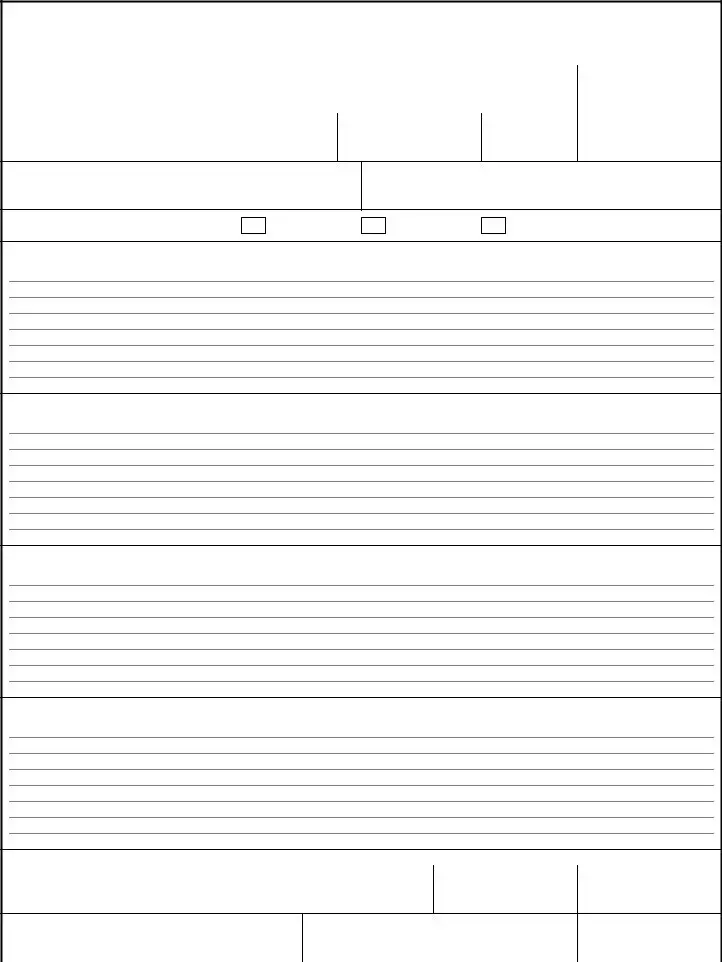The DD Form 2708 serves as a crucial document in the management of individuals in the U.S. military justice system, particularly when dealing with the transfer or temporary release of prisoners or detained persons. This form is designed to accurately capture essential details regarding the individual’s identity, circumstances surrounding their confinement, and the specifics of their transfer. It encompasses several key sections: information about the releasing unit or agency, the date and time of the transfer, and comprehensive details about the prisoner, including their name, Social Security number, rank, and duty station. Additionally, the form allows for the identification of the type of confinement, whether pre-trial, post-trial, or ongoing custody. Offenses or charges against the individual, referencing specific articles of the Uniform Code of Military Justice (UCMJ), are also noted, ensuring clarity and legal compliance. Furthermore, important remarks can be added, offering insights into the prisoner’s behavior or health that may aid in their reintegration or management. Lastly, a section requiring verification of the individual receiving custody ensures accountability and promotes transparency throughout the transfer process. Overall, the DD Form 2708 is instrumental in documenting the logistics and rationale behind the transfer or temporary release of military personnel in detention.

